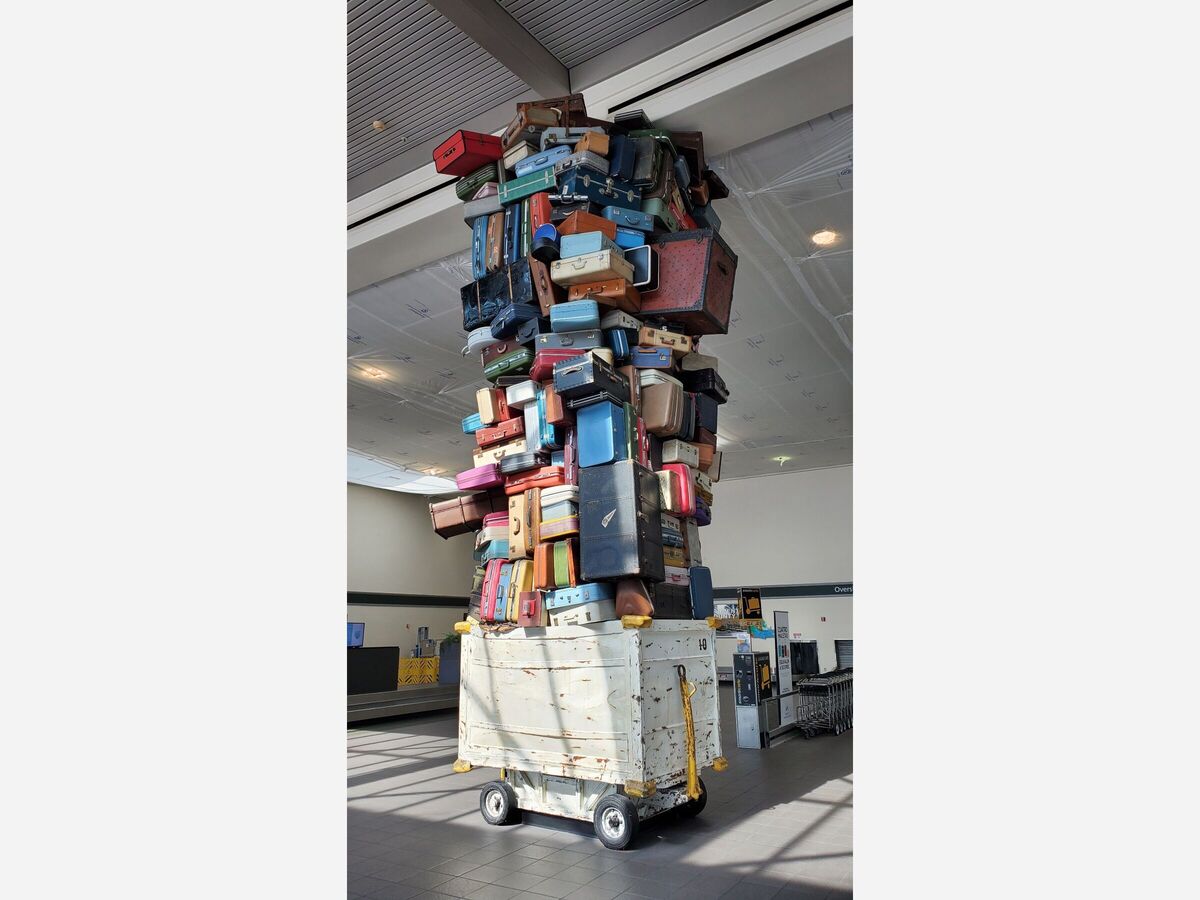Image


Unclaimed and abandoned old suitcases may soon be used for more, even bigger speed bumps at Kahului Airport (OGG), officials said Tuesday.
The number of suitcases lost in transport, and then unclaimed for at least a year, has reached an unmanageable level and must be addressed, airport officials said.
"We now have an entire warehouse stacked to the ceiling with these lunky old suitcases, and we really don't have any more space," said OGG spokeswoman Madeline Pahupahu. "Taking them to the landfill would not be environmentally responsible, so we thought, what the heck, let's figure out a way to recycle them!"
Kahului Airport already has the biggest speed bumps of any of the 330 major airports in the United States, according to a study of airport speed bumps last year.
The speed bump at the beginning of the airport access road, and in the middle of the main exit route, have startled motorists who believe their vehicle caught air going over them.
Some complained of neck or head pain from bonking their skulls on the ceiling inside their car while rolling over a speed bump at OGG. One woman from Seattle even had to spend the night under observation at Maui Memorial Medical Center.
"I tested them out one night when hardly anyone was around, and sure enough, those speed bumps would qualify for motorcycle jumping competitions," said Art Kaakaa of Wailuku, a motocross jumping enthusiast. "You can totally get gnarly air."
Last year's study ranked speed bumps based on engineering, height, width, size, and other factors such as a level of impact on a "Bone Jarring Scale." Kahului Airport ranked a solid 10 in that last factor.
"Bone-jarring is an apt way to describe them, especially that first speed bump," said Ahmed Agarwal of the National Airport Automobile Access Foundation (NAAAF), which commissioned the study. "It's like a message to visitors: Thanks for coming; let us help launch you on your way home."
To maintain their biggest speed bumps status, OGG officials are looking for designers who could come up with plans to use the thousands of unclaimed suitcases to create especially special speed bumps on airport roadways.
"Somehow we think we can get a sort of double-bump of a vehicle, if we arrange the suitcases carefully under asphalt," Pahupahu said. "Amazingly, they give us a lot of options and flexibility in terms of how to best set them.
"One idea is to set speed bumps about 3 feet apart, so speeding vehicles might get the sensation of taking off after hitting the first bump, then landing like on a ramp once the car falls back down to Earth. It would simulate an airplane taking off and landing."
Harold Haalulu, president of the Maui Auto Suspension Repairers Union, which helped the state in designing the current speed bumps, said his organization is withholding comment until they see more detailed plans.
"While we fully support huge speed bumps to really slow down traffic, and punish those who dare to speed into the airport, we are unsure how exactly suitcases can be used to make the situation even better," Haalulu said. "We will reserve judgement until we can see what they look like, and where they will go."
Pahupahu said there have been talks of putting in new speed bumps every 20 feet. "That's how many suitcases we need to recycle."